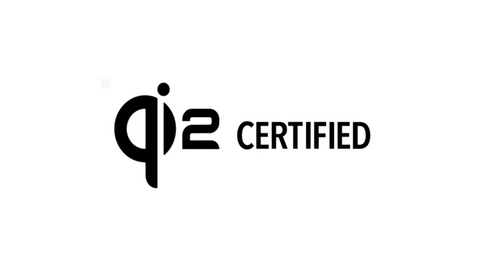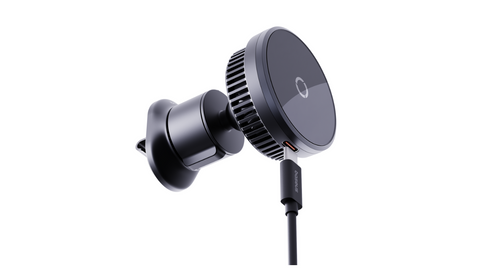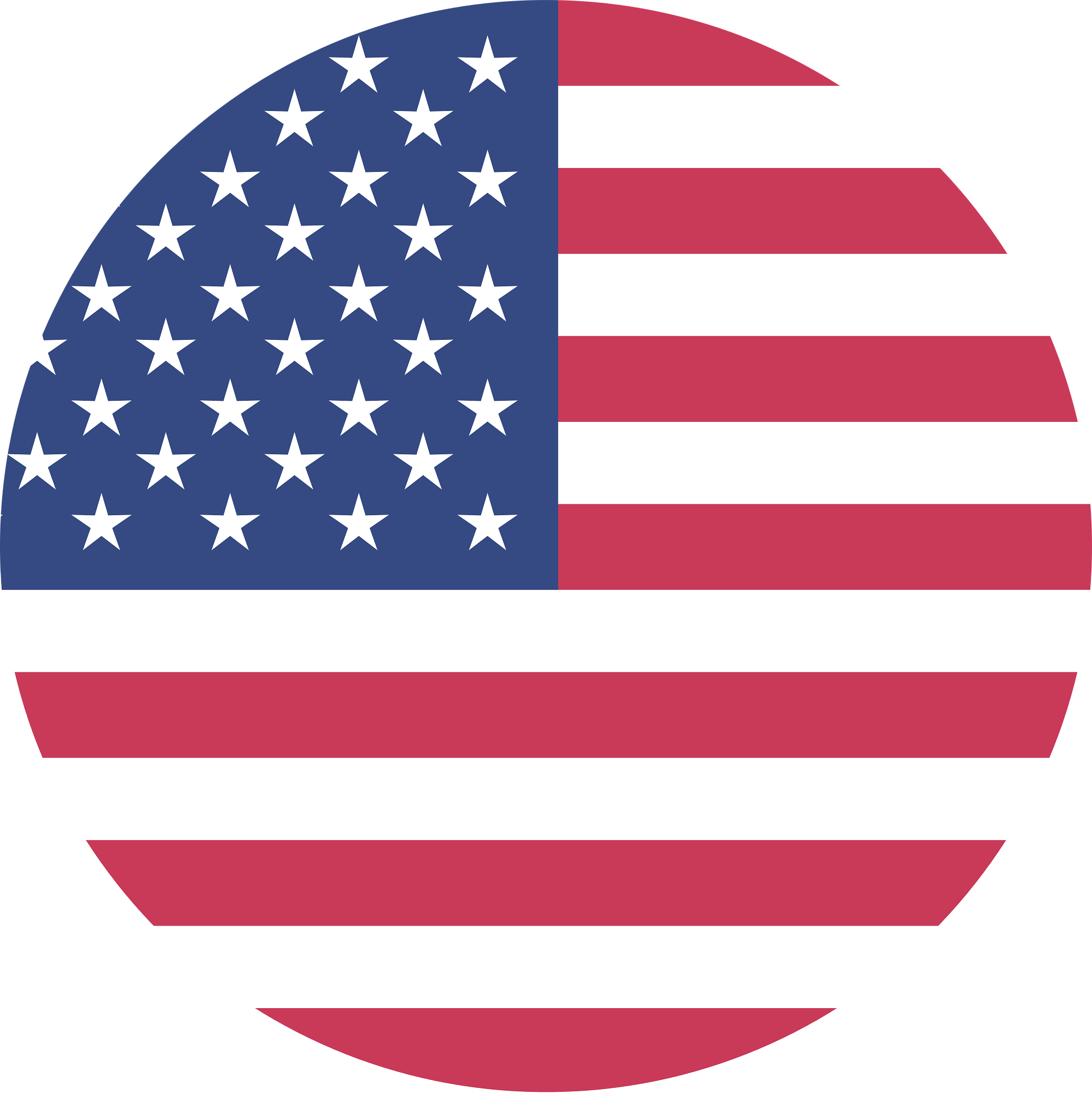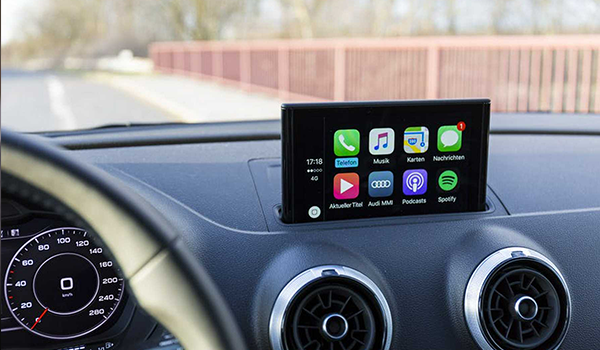Wireless charging seems like magic. You place a compatible device on the charging pad, and electricity passes seamlessly through the air. This magic, however, can come at a cost: slow charging speeds, battery damage, and in some cases, fire hazards.
Wireless charging technology has advanced in leaps and bounds, luckily. The next generation of the Qi charging standard--Qi2 wireless charging--aims to solve the above problems, and then some more. This new Qi2 standard even takes a page out of Apple's book in the process.
What is Qi2? Read on as we discuss in depth what the latest Qi certification entails.
What Is Qi2?

Qi (pronounced "Chi") charging technology is the creation of the WPC, or Wireless Power Consortium. This is a loose coalition that includes many major smartphone manufacturers. The WPC oversees the universal Qi gen one wireless charging standard seen in devices from smartphones to earbuds.
Earlier this year, the WPC announced that it was developing the next-gen Qi2 standard. As luck would have it, this also marks exactly 10 years since smartphones with wireless charging technology first arrived on the market.
Wireless charging seems like sci-fi tech, but as we've said, it suffers from some fundamental problems. Qi2 wireless charging aims to eliminate all of these issues at once. To do this, it takes inspiration from Apple's proprietary wireless charging tech: MagSafe.
Implementing MagSafe's Ring of Magnets
MagSafe is a pretty straightforward technology.
You have an identical ring of magnets hidden inside the charger and the device. When you place the device on the charger, it snaps into place in perfect orientation. The magnets are strong enough to keep them connected, even if you pick up the phone.
This used to be proprietary Apple technology, but the tech giant gave it away for free. Now, Qi2 charging will iterate on that ring of magnets just like MagSafe
Beyond Convenience
At first glance, it may just seem like just a minor convenience. It locks the phone to the charger, keeping it connected. You no longer have to worry about your device falling off when something bumps into it.
However, this solves one of wireless charging's biggest problems. Not only that, it may revolutionize wireless charging for years to come.
How Does Wireless Charging Work?
To understand why this ring of magnets is so revolutionary, you have to understand how wireless charging works. In essence, you are generating magnetic fields to create a phenomenon known as electromagnetic induction.
You do this with two copper coils. Like the magnets, you have one inside the charger and one inside the phone. Passing electricity through these copper coils generates a magnetic field.
Creating Induction
When you place the copper coils together--i.e. placing the phone on the charger--electromagnetic induction begins. This allows the charger to transfer electricity to the phone, which in turn charges it.
Ever wondered why so many phones these days have glass backs? This is precisely the reason. Metal--rather than glass or plastic--would hinder electromagnetic induction.
The Problem with Electromagnetic Induction Charging
Electromagnetic induction charging is a magnificent technology, but it has its limitations. For starters, it is highly inefficient compared to cable charging. Barring some physics-altering scientific discoveries, it will always be faster and more efficient to plug your phone into a cable directly.
This is because not all of the energy that the charger pushes out through the magnetic field reaches the phone. Even when the coils are perfectly aligned, a portion of the electricity gets lost. And unfortunately, this leads to heat generation on the coils--a problem, since heat is lithium ion's worst enemy.
Alignment Issues
To make matters worse, the heat increases when the copper coils are not in perfect alignment. If you set your phone down edgewise on the charger, it doesn't just take longer to charge. It generates a ton of heat in the process--which damages the battery and risks fire hazards.
For the same reason, fast charging can sometimes be bad for your phone. Phones do not have active cooling systems like fans to drive away heat. Plus, their components sit closely nestled next to the battery--leading to the phone's destruction if the battery catches fire.
Magnets Eliminate This Problem
What made MagSafe charging so revolutionary--and what will make the Qi2 standard a game-changer--is that it creates perfect alignment. When you set your phone down to charge, the magnets position the coils in perfect parallel. You never have to worry about coming back to a half-charged phone--or one that's alarmingly hot.
Not only do they prevent this risk to lithium-ion batteries, but they also improve charging efficiency. Aligned batteries charge faster, meaning you spend less time waiting around.
As a small added benefit, this makes it easier to use your device while it is charging. You don't have to worry about holding the bulky charger and phone in the wrong orientation. The magnets keep them attached tightly enough that there is no room for error.
Qi1 vs. Qi2: The Difference Between These Two Standards
Qi1 was the first iteration of the WPC wireless charging standard. While there were many iterations, none of them had this magnetic ring. This limited how fast they could charge--15W--and created the problems mentioned above.
The magnetic ring virtually eliminates the safety risks inherent in wireless charging. That alone should be worthy of a next-generation upgrade, but there is more to this upgrade.
Qi2 Will Have a Safety and Certification-First Approach
Qi2 will leverage smart microchip technology to make sure that charging is safe and efficient. One of the ways that it will do this is to perform a "handshake" between the device and the charger. This verifies that both have Qi certification before it begins to charge.
The WPC hopes to prevent unsafe or counterfeit products from crowding online marketplaces. There will be strict specifications for all Qi-certified products, too. If a device does not have strong enough magnets, for example, it will not receive certification.
This doesn't mean that you won't be able to buy high-quality third-party chargers. Rather, third-party manufacturers must toe the line. Otherwise, a phone with Qi certification may reject power consumption from any non-compliant device.
Qi2 Charging Will Be Faster
As convenient as wireless charging is, it has always been slow. Most people can expect to wait at least an hour for a full charge even on a flagship phone. Compare this to cable fast charging, which in some cases can get you a full charge in just 5 minutes.
In the future, Qi2 will charge much faster than its 15W predecessors. According to WPC, you can expect version 2.1--with fast wireless charging--in 2024 at the latest.
Again, wireless charging can never compare in speed and efficiency with cable charging. However, we can likely expect at least a 50 to 100% charging speed increase. That is conjecture, though, as the WPC has not put a firm target on future charging speeds.
Qi2 Will Be Universal
There have been some tablets, earbuds, and other devices that use Qi1 charging. The majority, though, have been smartphones. The reason is that it's much more difficult to align smaller devices on the copper coil.
Thanks to the magnetic ring, we may see a much larger swath of consumer electronics that support wireless charging. Just as the Apple AirPods Pro snap onto a charging pad, you may see more devices following suit.
Qi2 May Usher in a Wireless Era
For several years, people speculated--both jokingly and seriously--that Apple would eliminate charging cables. The tech giant has not dived down that rabbit hole just yet. Yet experts are still convinced that we are nearing a fully-wireless future--one we may actually want.
In the next 5 to 10 years, we may well see smartphones that do not have any charging ports. Instead, they will use induction charging. If they need to transfer data to a computer, they may well just do so with existing over-the-air standards.
Qi2 may be one of the stepping stones leading to this future. If manufacturers can iron out further problems with wireless charging, then there will be very few barriers between us and a truly wireless ecosystem.
This is all speculation, and no device yet has pushed this boundary. However, Qi2 may just be the gale signaling an incoming hurricane. One that may reshape consumer electronics forever.
Where Can You Buy Qi2-Enabled Devices?
This is where we have to give some bad news: the Qi2 specification is not yet available. The best estimate that the WPC can give for availability is sometime within 2023. Even when that date arrives, consumers will still have to wait until the manufacturers implement the technology into their products.
If all goes well, we may just see the first Qi2 wireless charging devices by the beginning of 2024. As it is expected to have Qi2 Magpro Magnetic Wireless Charger Phone Holder Cosmic at the spring of 2024 from Baseus. If you are planning on upgrading your smartphone, consider waiting a bit longer. Otherwise, any device you buy now will be stuck with the inferior Qi1 standard.

Find Industry-Leading Chargers at Baseus
Qi2 is the WPC's successor to the universally-loved Qi certification standard. It solves the biggest problem with wireless charging: managing heat from electromagnetic induction. Qi2 won't just provide additional convenience, it will make wireless charging safer and faster.
Baseus is the leader when it comes to quality charging products. Check out our best sellers for some excellent deals on power banks and docks.
 United States/English
United States/English





